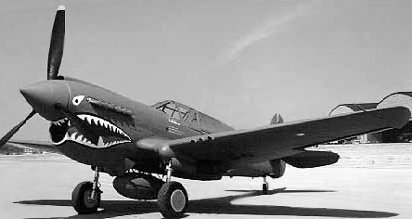
|
David Lee Hill was born on the 13th of July 1915 in Kwangju, Korea, the son of Presbyterian missionaries, who moved to Texas when he was 6 years old. After finishing Austin College in 1938, “Tex” completed naval flight school and served in a torpedo squadron (VT-3) on USS Saratoga and in a dive-bomber squadron (VB-41) on USS Ranger. He was recruited in 1941 to serve in the Claire Chennault’ American Volunteer Group (AVG). He reported in July and served as flight leader and then squadron leader of the 2nd Squadron, flying the Curtiss P-40 Warhawk. In his service with the Flying Tigers, he was credited with destroying 10.25 Japanese planes, one of the top aces of that famous unit. His first victories came on the 3rd of January, 1942, when he downed two Ki-27 Nates over the Japanese airfield at Tak, Thailand. He claimed two more on the 23rd, and "made ace" on the 24th, when he shot down a bomber and a fighter over Rangoon. In March, he succeeded Jack Newkirk as Squadron Leader of the Second Squadron. On the 7th of May,1942, the Japanese Army began building a pontoon bridge across the Salween River, which would allow them to move troops and supplies into China. To stem this tide, 2nd Squadron Leader David Lee "Tex" Hill led a flight of four new P-40Es, bombing and strafing into the mile deep gorge. During the next four days, the AVG pilots flew continuous missions into the gorge, effectively neutralizing the Japanese forces. From that day on, the Japanese never advanced farther than the west bank of the Salween. Claire Chennault would later write of these critical missions, "The American Volunteer Group had staved off China's collapse on the Salween." |


